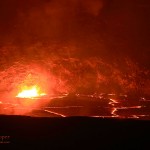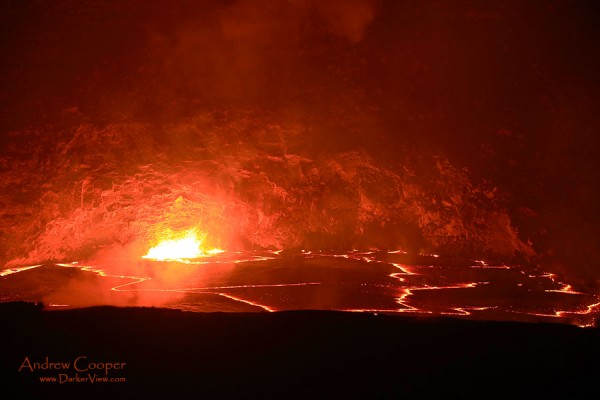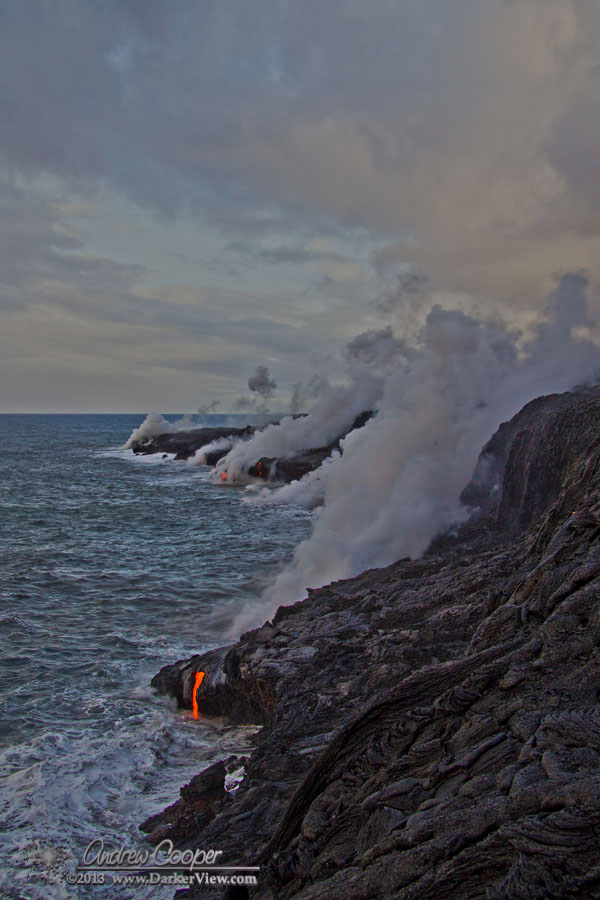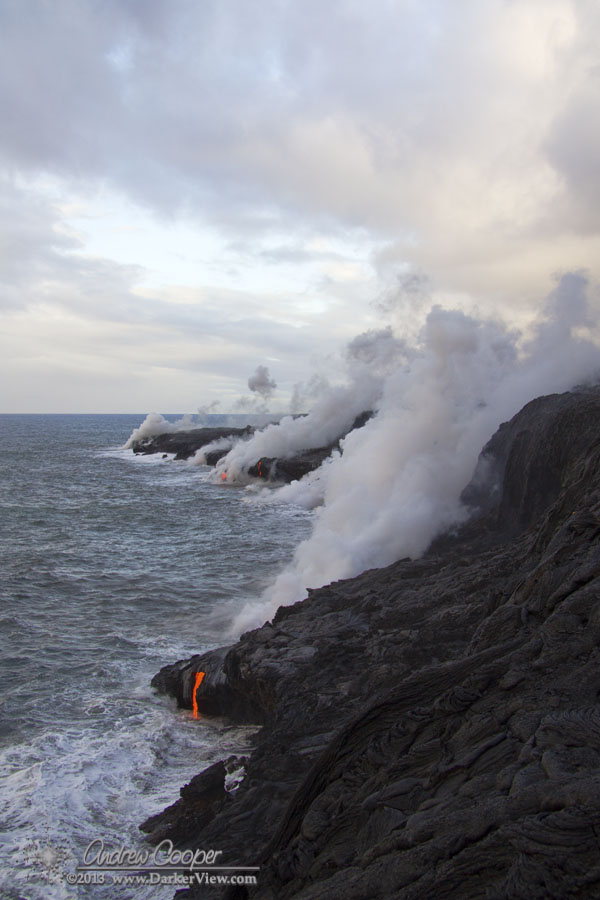The pressure just keeps on building. This is a major surge of magma into the mountain. There is not much mystery about this… The increased seismic levels, the rising lava lake, but most of all the tilt meters indicating substantial inflation of the summit caldera.
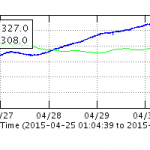
As you can see from the graph it has gone up and up over the last week. There have been a couple pauses, almost looking like it was going to begin deflation. But no, it just goes up again. The result is lava spilling out onto the floor of Halemaʻumaʻu crater and a beautiful nighttime show.
The interesting thing is that this increase in pressure has not been seen at the downslope vent around Puʻu ʻŌʻō. The flows there remain rather anemic and there is no sign of inflation around the vent. Add the seismic data and things get interesting.

I on the other hand, have no professional reputation as a vulcanologist. I can throw caution to the wind and prognosticate…
My prediction? Unless something occurs to relieve the pressure, perhaps a major increase in the flow of lava at Puʻu ʻŌʻō, there will be an eruption elsewhere. My guess? South of the main caldera along the southeast rift zone in the Makaopuhi Crater or Nāpau Crater area.
When? Who knows, much depends on the magma supply surge continuing. As long as the pressure keeps building the odds of an eruption elsewhere on the volcano increase with it.
It will be interesting to watch. And watch we will. I expect to be at the Jagger museum overlook Saturday evening. Look for the crowd around my telescope.

